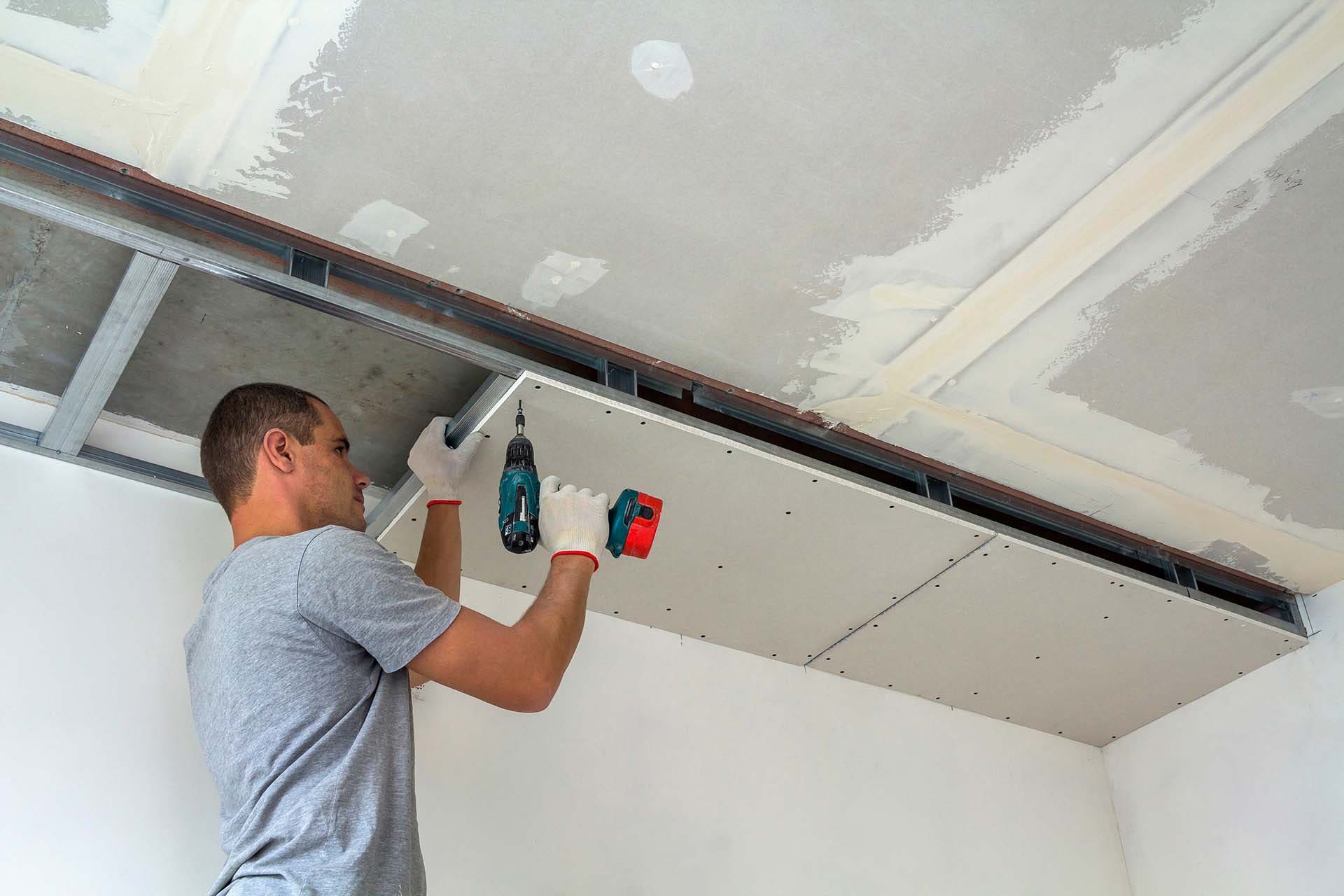Construction costs are rising while quality demands increase. Builders struggle to find materials that deliver both performance and value in today's market.
Gypsum board offers the perfect balance of lightweight strength, fire resistance, thermal efficiency, and sustainability, making it the optimal wall system for modern construction projects seeking cost-effective performance.

I've spent over 15 years in the gypsum board manufacturing and export business. I've watched this material evolve from a basic wall covering to a comprehensive building solution. Let me share why gypsum board has become indispensable in modern construction.
How Does Lightweight Strength Balance Durability and Easy Installation?
Most builders think strong materials must be heavy. This misconception has cost projects millions in unnecessary structural reinforcement and inflated labor costs.
Gypsum board weighs only 2-3 pounds per square foot while maintaining 200+ PSI compressive strength, reducing structural loads by 60% compared to traditional materials without sacrificing wall integrity or durability.

Here's what I've learned from working with contractors worldwide. The weight advantage creates cascading benefits throughout the entire construction process. Lighter materials mean smaller foundations, reduced structural steel, and faster installation.
Strength-to-Weight Performance Analysis
| Property | Gypsum Board | Concrete Block | Cement Board |
|---|---|---|---|
| Weight (lb/sq ft) | 2-3 | 8-12 | 4-6 |
| Compressive Strength | 200+ PSI | 1900 PSI | 3000 PSI |
| Installation Speed | Fast | Slow | Medium |
| Structural Load | Low | High | Medium |
| Labor Requirements | 1 person | 2-3 persons | 2 persons |
The installation speed difference amazes most clients. A two-person crew can install 1,000 square feet of gypsum board in one day. The same area in concrete block requires a four-person crew working three days. This translates to 600% improvement in labor efficiency.
I remember a hospital project in Dubai where the architect initially specified concrete block walls. The structural engineer calculated the additional foundation requirements and steel reinforcement. Switching to gypsum board systems saved $2.3 million in structural costs alone.
The durability aspect surprises many engineers. Gypsum board's crystalline structure provides excellent impact resistance and dimensional stability. In controlled tests, properly installed gypsum board walls withstand normal building movements and settle without cracking.
Modern gypsum board manufacturing includes additives that enhance strength characteristics. Glass fiber reinforcement, polymer binders, and improved core formulations create boards that outperform traditional gypsum products while maintaining easy workability.
The installation ease extends beyond weight considerations. Gypsum board cuts cleanly with standard tools, accepts screws without pre-drilling, and joints finish smoothly with standard compounds. This simplicity reduces skill requirements and minimizes installation errors.
Why Are Fire Resistance and Thermal Performance Critical in Building Applications?
Building codes are tightening globally while energy costs soar. Materials that fail to address both fire safety and thermal efficiency become liability risks.
Gypsum board provides up to 4-hour fire ratings while maintaining excellent thermal properties, with chemically bound water releasing steam to suppress flames and low thermal conductivity reducing energy transfer.

The fire protection mechanism in gypsum board works through unique chemistry. Each square foot contains approximately 0.5 pounds of chemically bound water. When exposed to fire, this water converts to steam, absorbing heat energy and cooling the fire zone.
Fire and Thermal Performance Specifications
| Performance Metric | Standard Board | Fire-Rated Board | Type X Board |
|---|---|---|---|
| Fire Rating | 30 minutes | 60 minutes | 120 minutes |
| Thermal Conductivity | 0.09 BTU/hr·ft·°F | 0.08 BTU/hr·ft·°F | 0.07 BTU/hr·ft·°F |
| Steam Release | Yes | Enhanced | Maximum |
| Temperature Stability | 300°F | 400°F | 500°F |
| Core Additives | Standard | Glass fiber | Vermiculite + fiber |
The thermal performance creates significant energy savings. Independent testing shows gypsum board wall systems reduce HVAC energy consumption by 15-25% compared to masonry construction. The reduced thermal bridging and improved insulation effectiveness contribute to this advantage.
I worked with a school district in Texas that replaced aging concrete block classrooms with gypsum board construction. The fire rating improved from 1-hour to 2-hour, while cooling costs dropped by $180,000 annually across 50 buildings.
Fire-rated gypsum boards incorporate additional materials like vermiculite, perlite, or glass fibers. These additives enhance the steam generation process and improve structural integrity during fire exposure. The boards maintain dimensional stability longer, providing additional escape time.
The thermal mass characteristics also benefit temperature control. Gypsum board absorbs and releases heat gradually, reducing temperature swings and improving occupant comfort. This thermal flywheel effect reduces HVAC cycling and extends equipment life.
Code compliance becomes simpler with gypsum board systems. Pre-tested assemblies provide documented fire ratings, eliminating costly custom testing. Insurance companies often offer premium reductions for buildings with proper fire-rated gypsum board construction.
How Do Sustainable and Cost-Effective Features Support Green Building Goals?
Green building certification demands are rising while construction budgets tighten. Materials must deliver environmental benefits without premium pricing to succeed in modern markets.
Gypsum board contains 95% natural materials, generates 75% less manufacturing emissions than alternatives, costs 40-60% less than competing systems, and achieves 100% recyclability, making it ideal for LEED and BREEAM projects.

The sustainability story begins in manufacturing. Natural gypsum requires minimal processing compared to cement or steel production. Our facilities use 60% less energy than concrete block plants and generate virtually no toxic emissions.
Sustainability and Cost Performance Metrics
| Environmental Factor | Gypsum Board | Concrete Block | Steel Studs + Drywall |
|---|---|---|---|
| Embodied Energy | 2.5 MJ/kg | 1.0 MJ/kg | 5.2 MJ/kg |
| CO2 Emissions | 0.12 kg/kg | 0.22 kg/kg | 0.89 kg/kg |
| Recycled Content | Up to 25% | 5-10% | 25-90% |
| End-of-Life | 100% recyclable | Limited | 95% recyclable |
| Material Cost | $0.50-1.50/sq ft | $2.00-4.00/sq ft | $1.80-3.20/sq ft |
The cost advantage becomes more significant in large projects. A 100,000 square foot office building saves $150,000-300,000 in material costs alone by choosing gypsum board over alternative systems. Installation labor savings add another $200,000-400,000.
I've helped several developers achieve LEED Gold certification using gypsum board systems as a key component. The material contributes points in multiple categories: recycled content, regional materials, low-emitting materials, and construction waste management.
The manufacturing process creates minimal waste. Gypsum powder, water, and starch form the basic recipe. Waste materials from board production return directly to the manufacturing process. Even packaging materials use recycled content and remain fully recyclable.
Indoor air quality benefits support green building goals. Gypsum board emits no formaldehyde or VOCs during its service life. The natural pH buffering helps maintain healthy indoor environments by moderating humidity fluctuations and preventing mold growth.
End-of-life management completes the sustainability cycle. Used gypsum board can be reprocessed into new board production, agricultural soil amendment, or cement manufacturing additive. This closed-loop system eliminates landfill waste and creates additional economic value.
The regional availability reduces transportation emissions. Gypsum deposits exist globally, allowing local production that minimizes shipping distances. This distributed manufacturing model supports both environmental goals and local economic development.
Life-cycle cost analysis shows gypsum board systems provide 25-30% lower total cost of ownership over 50 years compared to masonry or steel alternatives. The combination of lower initial costs, reduced maintenance, and energy savings creates compelling economic advantages.
Conclusion
Gypsum board delivers optimal performance through lightweight strength, superior fire protection, thermal efficiency, and sustainable manufacturing, making it the smart choice for modern construction success.
